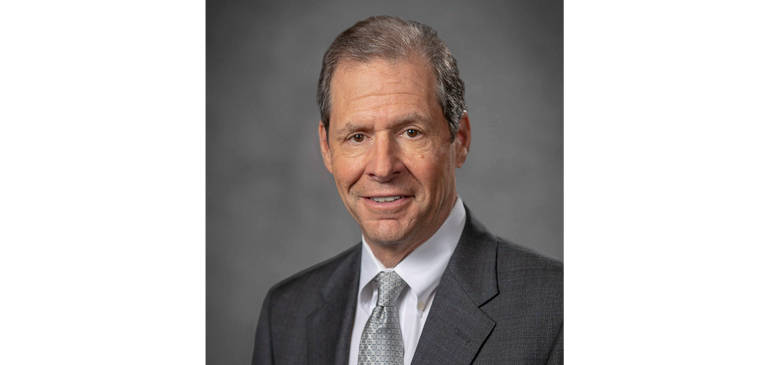Between annual meetings, the ACR BOC and CSC continue the work of governing the College and serving its members. The BOC typically schedules four meetings a year — two in conjunction with the annual meeting and two interim meetings. In recent years, the CSC has been invited to not only attend but also participate in the BOC meetings. There are also synchronous meetings of several standing committees, including the Executive Committee, the Budget and Finance Committee, the Audit Committee, the Governance Committee, and the CSC.
In October, we held our fall BOC retreat. The agenda of the meeting was designed to encourage robust discussion about controversial and/or salient topics in radiology. Standard agenda items included reports from the BOC chair, the CEO, the president, and the secretary/treasurer. The agenda incorporated business matters from the ACR, the American College of Radiology Association® (ACRA®), and the ACR Foundation (ACRF®). Under the ACRA, we received extensive updates from Gregory N. Nicola, MD, FACR, chair of the Commission on Economics, and Cindy Moran, executive vice president of government relations, economics, and health policy. The ACR Foundation is expanding its role in supporting programs such as the Harvey L. Neiman Health Policy Institute (NHPI) and the Radiology Leadership Institute®(RLI), as well as the College’s international outreach efforts.
During the retreat, we held special sessions concerning pressing issues in the College and the specialty, including radiology’s contribution to population health management (PHM), the radiology workforce, and the importance of communication, as well as the importance of programs such as the Radiology Health Equity Coalition, the ACR Institute for Radiologic Pathology™, and the NHPI. The workforce portion of the meeting focused on several critical issues, notably the controversy surrounding the role of non-physician radiology providers (NPRPs). The NPRP Task Force, chaired by Timothy L. Swan, MD, FACR, is charged with gathering and processing information about the utilization of NPRPs in current practice. The results of a recent physician membership survey have been analyzed by an independent third party and shared with the membership. The workforce portion of the meeting also included a presentation highlighting the critical shortage of RTs that is impacting all of our practices and departments.
Strategically speaking, the Board identified PHM as an exciting “blue ocean” opportunity for radiology. This underexplored territory is a chance to provide important services for a wider patient base, including those in underserved areas. The PHM session included a presentation by John P. Williams, MD, chair of the President’s Cancer Panel, which advises the White House on the National Cancer Program. In addition to providing a comprehensive overview, Williams challenged the ACR and the radiology specialty to take a leading role in PHM. Next, Perry J. Pickhardt, MD, FACR, professor of radiology and chief of GI imaging at the University of Wisconsin School of Medicine and Public Health, presented “opportunistic screening” data that his team developed from routine exams.1 Pickhardt’s work illustrated some of the additional information that can be harvested from our digital exams to advance individual, personal, and population health. Finally, Arun Krishnaraj, MD, MPH, chair of the ACR Commission on Patient- and Family-Centered Care, provided an update on the ACR efforts and goals in radiology and PHM.
On a quarterly basis, including at the retreat, the College’s commissions provide update reports to the BOC. The College recognizes its responsibility and significant influence with members and external stakeholders, including its patients. By its very nature, the ACR is a highly complex and matrixed organization. These commission reports provide us with a glimpse into the scope and breadth of how the ACR is working to provide value to its members and the profession. I urge you to take a few moments to peruse the reports to get a sense of the amount of work being done by the ACR’s staff and volunteer physicians.
A major feature of the fall retreat was the consideration of the new strategic plan. The ACR’s last strategic plan was developed in 2014 and revamped in 2017. The new version was developed to engage our members, especially the early career radiologists, the YPS, and the RFS. The principles of the strategic plan were presented by the emerging leaders and younger members of the core committee. After discussing, the BOC voted to adopt the new plan. The following day, we held breakout sessions with physician volunteers and staff about how to operationalize the objectives and realize the goals of the new plan. This work is far from complete. Now comes the task of not only operationalizing the plan but developing metrics and routinely measuring our success. The new plan can be viewed on the ACR website.
Finally, we spent a session at the meeting talking about the importance of communication. The BOC stressed the critical need to have bidirectional communication between the ACR and members. Some of the action items from this portion included revitalizing the Communications Committee of the Commission on Membership and Communications and looking at best practices to help us improve our communication efforts. The College’s communication efforts will remain an ongoing item on the Executive Committee’s monthly agenda and I will be reserving additional time for this topic at our next BOC meeting in January.
The leaders and members of the ACR are dedicated to the profession and to our patients. We are all working to pay it forward for the next generation of radiologists. The BOC and its commissions play a critical role in the governance of the College, the operationalization of the College’s policies, and the fostering of innovation to advance medical imaging’s role in our patients’ healthcare.

